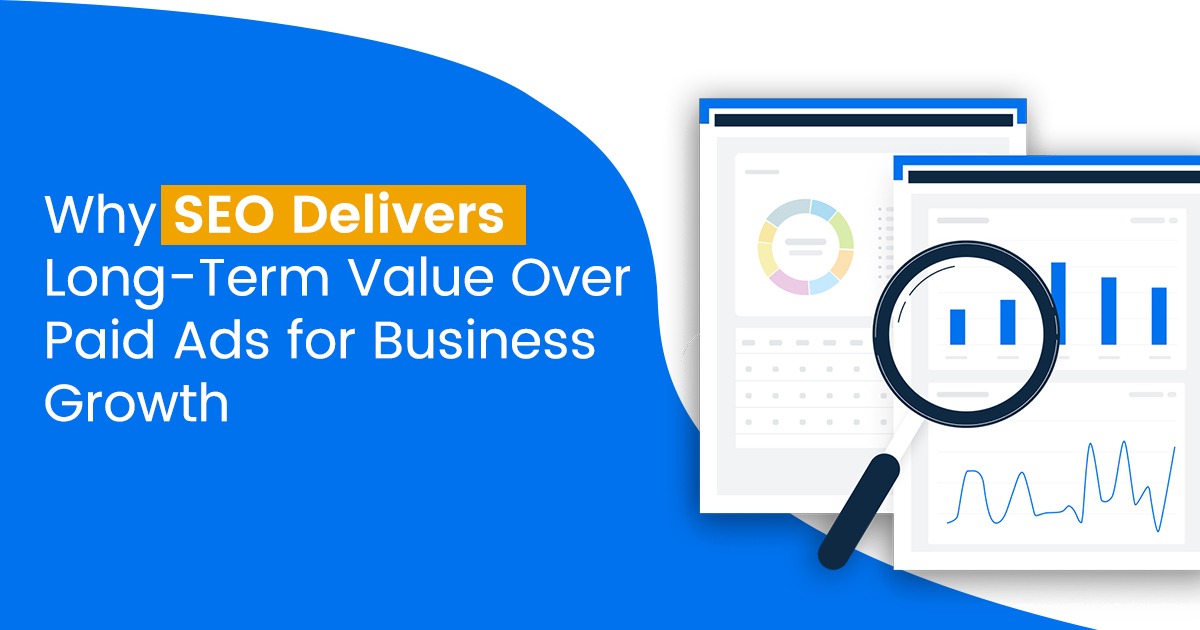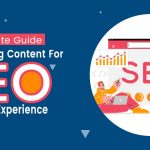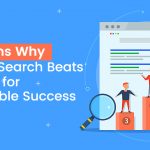Why SEO Delivers Long-Term Value Over Paid Ads for Business Growth
|
Getting your Trinity Audio player ready...
|
Why SEO Delivers Long-Term Value Over Paid Ads for Business Growth
In the digital landscape, businesses are continuously strategizing ways to increase visibility, attract potential customers, and drive sales. Two primary methods often come up in the conversation: Search Engine Optimization (SEO) and Paid Ads. While paid advertising offers instant gratification with immediate results, SEO, though slower to show returns, is widely regarded as a long-term strategy that delivers sustainable growth. This blog post delves into why SEO provides long-term value for business growth, far surpassing the temporary gains offered by paid ads.

1. Cost Efficiency: SEO as a Sustainable Investment
One of the most compelling reasons to invest in SEO is its cost-effectiveness compared to paid advertising. Paid ads, especially in competitive industries, can become expensive quickly. Each click or impression comes with a price tag, and once your advertising budget is depleted, so are your results. On the other hand, SEO involves upfront investments in optimizing your website, creating content, and improving technical aspects, but these efforts continue to pay off long after the initial work is done.
SEO builds long-term value through organic traffic, which doesn’t rely on a constant influx of ad spending. The content you create and optimize today can continue attracting visitors for months or even years. Over time, this cumulative traffic often far outweighs the one-time impact of a paid ad campaign.
2. Compounding Returns: SEO Grows Over Time
Paid ads provide immediate visibility, but they lack the compounding effect that SEO offers. With paid ads, once the campaign ends, the visibility and traffic disappear as well. SEO, however, is a long-term strategy that builds on itself over time. As your website gains more authority and relevance in search engines through backlinks, user engagement, and optimized content, it becomes easier to rank higher for more keywords.
This snowball effect means that SEO efforts from previous months or years can continue to benefit your business. Unlike paid ads, which have a linear return on investment (ROI), SEO’s ROI increases exponentially as your website becomes more established and trusted by search engines.
3. Credibility and Trust: Organic Results Inspire Confidence
In today’s digital age, consumers are more discerning than ever. Many users are aware that paid ads are sponsored placements, and they may not trust these results as much as organic search listings. Research shows that users tend to click on organic results more often than ads, especially for informational searches. Organic rankings are viewed as more credible because they are earned based on relevance, authority, and user experience rather than paid for.
SEO helps establish your website’s credibility and trustworthiness over time. When a business consistently ranks high in organic search results, it signals to potential customers that the brand is a leader in its field. This trust can lead to higher click-through rates (CTR), better user engagement, and ultimately, more conversions compared to paid ads.
4. Higher Click-Through Rates: Organic Listings Dominate
According to multiple studies, organic listings receive significantly more clicks than paid ads. While paid ads occupy prominent positions at the top of search engine results pages (SERPs), users tend to skip over them and go straight to the organic results. This is particularly true for users conducting informational or research-based searches.
The higher click-through rate (CTR) of organic listings means that your SEO efforts can generate more traffic without the constant cost associated with paid ads. Moreover, users who click on organic results are often more qualified leads, as they are actively seeking information or solutions rather than responding to an ad. This leads to higher-quality traffic, better engagement, and more meaningful conversions.
5. Ad Fatigue and Banner Blindness: The Declining Effectiveness of Paid Ads
As digital marketing becomes more prevalent, users are increasingly developing ad fatigue and banner blindness. Ad fatigue occurs when users become overwhelmed by the sheer number of ads they see, leading them to ignore or even develop negative associations with advertisements. Banner blindness refers to the phenomenon where users subconsciously skip over ads because they are conditioned to expect them in certain locations on a webpage. facebook
SEO, on the other hand, is a non-intrusive way to reach your audience. When users find your website through organic search, they are actively seeking out your content, products, or services. This results in a more positive user experience, higher engagement, and a greater likelihood of conversions.
6. Adaptability: SEO Adjusts to Changes in Search Behavior
SEO is a dynamic strategy that can evolve with changes in consumer behavior and search engine algorithms. As search engines like Google continue to update their algorithms to prioritize user experience, content relevance, and mobile-friendliness, businesses that invest in SEO can stay ahead of the curve by adjusting their strategies accordingly.
Paid ads, on the other hand, are more rigid. While you can adjust targeting, bidding, and creative elements, the fundamental mechanics of how ads work remain static. Additionally, paid ad platforms frequently change their rules and cost structures, forcing businesses to spend more just to maintain their visibility. SEO, while requiring ongoing maintenance and updates, adapts more naturally to changes in search behavior and platform updates, offering a more sustainable and long-lasting strategy.
7. SEO Supports the Entire Marketing Funnel
Paid ads are typically used to target specific points in the marketing funnel, such as driving awareness or converting leads into customers. SEO, however, supports every stage of the customer journey, from awareness to consideration to decision. Through targeted content, keyword optimization, and site structure, SEO can attract users at all stages of their decision-making process.
For example, blog posts can drive top-of-funnel traffic by addressing common questions or problems that potential customers are searching for. Product pages and case studies can target users further down the funnel who are comparing options. This holistic approach ensures that your website serves as a valuable resource for your audience at every stage of their journey, leading to stronger relationships and increased conversions.
8. Competitor Edge: SEO Keeps You Ahead in the Long Run
Finally, investing in SEO provides a competitive edge in the long run. Businesses that invest in long-term SEO strategies often outperform competitors who rely solely on paid ads for visibility. While paid ads can help you achieve short-term gains, they do little to establish a solid foundation for sustained growth.
In contrast, SEO helps you build a strong digital presence that keeps delivering results, even as competitors come and go. By focusing on improving your website’s authority, creating high-quality content, and delivering a better user experience, you can outlast competitors and enjoy continuous growth without the need for constant ad spending.
While both SEO and paid ads have their place in a comprehensive digital marketing strategy, SEO offers long-term value that paid ads simply cannot match. With cost-efficiency, compounding returns, higher trust and credibility, and a more sustainable impact on your business’s growth, SEO stands out as the superior choice for businesses seeking lasting success in the online marketplace. Investing in SEO today can ensure a steady stream of traffic, leads, and sales for years to come.

 Previous Post
Previous Post Next Post
Next Post